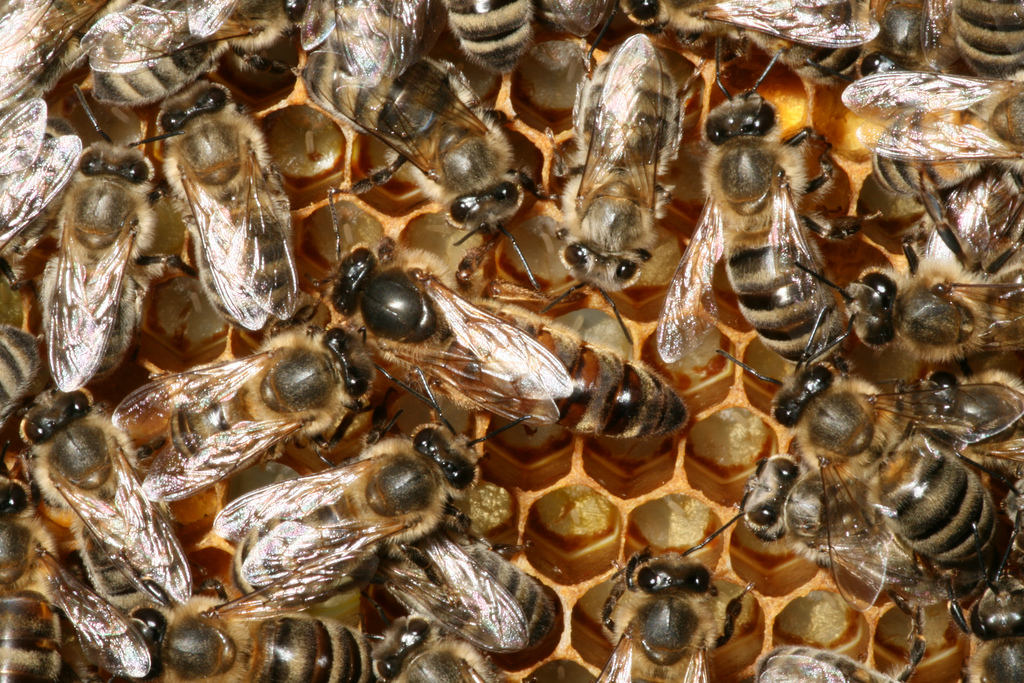Queen honeybee Official State Agricultural Insect of Alabama Photo by John Brandauer / Flickr (noncommercial use permitted with attribution/no derivative works).
Official State Agricultural Insect of Alabama
Alabama designated the queen honeybee as the official state agricultural insect in 2015 (Alabama also recognizes an official state butterfly and a state insect). Many states recognize the honeybee as a state symbol because of the important role honeybees play in agriculture. All State Insects
Madison County beekeeper Bill Mullins (who attended the bill signing ceremony) said; “If Alabama didn’t have queen honeybees, our agricultural industry wouldn’t be as successful as it is. This bill will encourage honeybee education and awareness so more people will know where their food comes from.”
At the ceremony, Governor Robert Bentley said; “Agriculture is the state of Alabama's top industry, producing a yearly economic impact of $70.4 billion. HB286 will expand the important role the queen honeybee plays in the state of Alabama and will educate our citizens about the honeybee through Agriculture in the Classroom and other educational efforts.”
Honeybee Facts
Honeybees live in hives of up to 80,000 individuals. A hive normally consists of one queen bee (who can live 8 years and lay over 1,500 eggs per day - the worker honeybees feed, follow, and protect the queen), a small group of male drones to fertilize a new queen on her nuptial flight (should one be produced), and the remaining vast majority of sterile female worker bees.
Young worker bees are called house bees - they construct the hive and maintain the comb, care for the eggs and larvae, tend the queen and drones, regulate temperature, and defend the hive. Older workers are field bees - they gather nectar and forage for pollen, water and plant resins used in hive construction. Worker bees have an extra stomach and special pollen baskets on their hind legs to transport the booty. Empirical evidence suggests that the honeybee "dances" to communicate the location of a nectar discovery to other honeybees. Worker bees only live about 6 weeks in summer months, but honeybees born in fall survive until the following spring.
The first bees appear in the fossil record dating 40 million years ago and the honeybee has remained physically and socially unchanged for 30 million years. Probably originating in tropical Africa, they were brought to the New World with the first Spanish and English colonists, quickly escaping to the wild and eventually populating the entire western hemisphere. Native Americans called honeybees "white man's flies."

